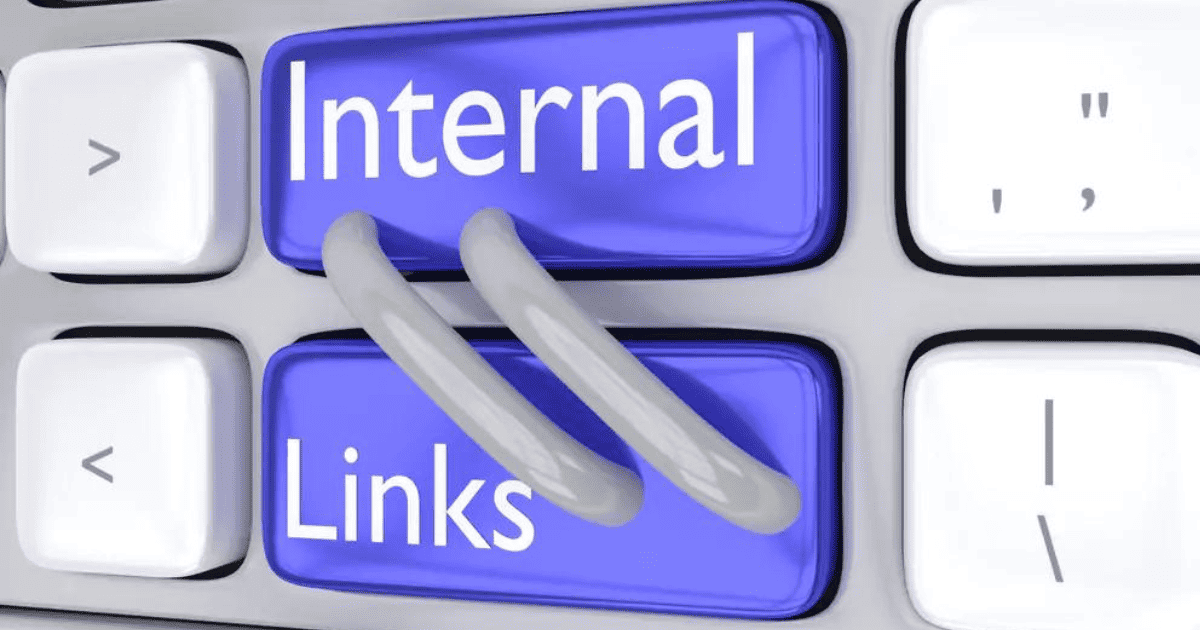The Power of Internal Links for SEO:Boosting Your Blog Visibility
Internal linking is a potent tactic in the broad and fiercely competitive world of search engine optimization (SEO) that may significantly increase your blog’s exposure and organic traffic. You can improve user experience, raise page authority, and improve your blog’s overall SEO performance by thoughtfully inserting links into your content. These links will direct visitors and search engines to pertinent pages on your website. The significance of internal links for SEO will be covered in detail in this post, along with practical methods for maximizing their influence on your blog’s online visibility.
What Are Internal Links In Seo?
Internal links are hyperlinks used in SEO to link pages on the same domain. These connections are crucial for SEO since they aid search engines in comprehending the hierarchy and structure of a website. By connecting pertinent sites, these links can help with user experience, link distribution, and website navigation.
They are critical in directing search engine crawlers to find and index information, which can eventually improve organic results. By putting the URL of the target page within an anchor element, HTML is frequently used to establish these links.
How Do Internal Links Impact Seo?
Internal links are essential for SEO since they connect pages on a website and aid in understanding the site’s structure and hierarchy of content by search engines. These connections aid in navigation and disperse link equity around the website, making it easier for search engines to find and index new pages.
Website owners may prioritize crucial sites, enhance the user experience, and improve their overall SEO performance by carefully deciding where to place these links.

What Is The Purpose Of Using Internal Links?
Internal links connect pages on a website and make it simple for people to browse relevant material. Internal connections provide websites with a clear and logical structure, which enhances usability and user experience. Additionally, they help search engines comprehend the relationships and hierarchy among the pages on a website, which is beneficial for exploring engine optimization (SEO) efforts.
Website owners may direct users to key pages, boost page views, and improve overall website performance by carefully establishing these links.
How Can Internal Links Improve Website Navigation?
Such links offer a clear and organized framework for visitors to browse between the many sections of a website, significantly improving website navigation. Users may quickly access relevant information or explore various website parts using these types of links carefully placed throughout the material.
In addition to improving user experience, this aids search engines in comprehending the website’s hierarchy and organizational structure, enhancing indexing and ranking. Furthermore,these links can assist in spreading link equity around the website, improving the visibility and authority of critical sites.
What Are Some Best Practices For Using Internal Links In Seo?
To optimize such links for SEO, there are several best practices to consider:
Use descriptive anchor text:
The text that may be clicked on to open a hyperlink is called anchor text. It is vital to provide anchor language that correctly summarizes the information on the linked page and is relevant and evocative. This aids search engines in comprehending the relevance and context of the linked page.
Create a logical site structure:
Create a logical and hierarchical structure for the material on your website. This entails grouping your pages into pertinent sections and subsections to facilitate site navigation for visitors and search engines. A clean site layout makes it easier for search engines to recognize the significance and connections between various sections.
Link deep within your site:
These links should also point to more than just the home page or other top-level sites. Connecting deep inside your website is advantageous, meaning people and search engine crawlers to specific pages that could contain worthwhile material. By doing this, you may increase the visibility of deeper pages in search engine results and spread link equity across your website.
Use contextual linking:
Such links should be inserted into the main body of a web page rather than only in the sidebars or navigation menus. This practice is known as contextual linking. Because it implies that the linked page has extra information on the subject under discussion, this style of linking gives users and search engines more context and relevance.
Avoid excessive internal linking:
While internal linking is necessary, avoiding using it excessively is crucial. Excessive internal links can confuse users and lessen the impact of each link individually. Instead of over-saturating users with links, offer pertinent and valuable connections that improve their experience.
Conclusion
In conclusion, internal links are pretty crucial for improving a blog’s search engine optimization (SEO) exposure. Website owners may improve the overall structure of their site, the user experience, and organic traffic by adequately positioning and optimizing internal connections inside a blog. These links make it simpler for search engines to browse and index pages by assisting them in understanding the structure and relevancy of material inside a website.
FAQs
What Are Internal Links?
These links point from one page on your website to another within the same domain. They help users navigate your site and can also improve your search engine rankings.
Why Are Internal Links Important For Seo?
Such type of links can help improve your search engine rankings by:
- Helping search engines understand the structure and hierarchy of your website.
- Passing link equity from one page to another.
- Providing users with a better navigation experience.
How Do I Create Effective Internal Links?
To create effective internal links, follow these best practices:
- Use descriptive anchor text that accurately describes the destination page.
- Use contextual links that are relevant to the content on the page.
- Avoid using too many such types of links on a single page.
- Use various link types (e.g., naked links, keyword-rich links, image links).
How Can I Optimize My Internal Linking Strategy?
To optimize your internal linking strategy, consider the following tips:
- Use a logical URL structure that is easy for users and search engines to understand.
- Use a consistent naming convention for your pages and posts.
- Use descriptive headings and subheadings to help users and search engines understand the content of your pages.
- Use these links to highlight important website content and help users find related information.

